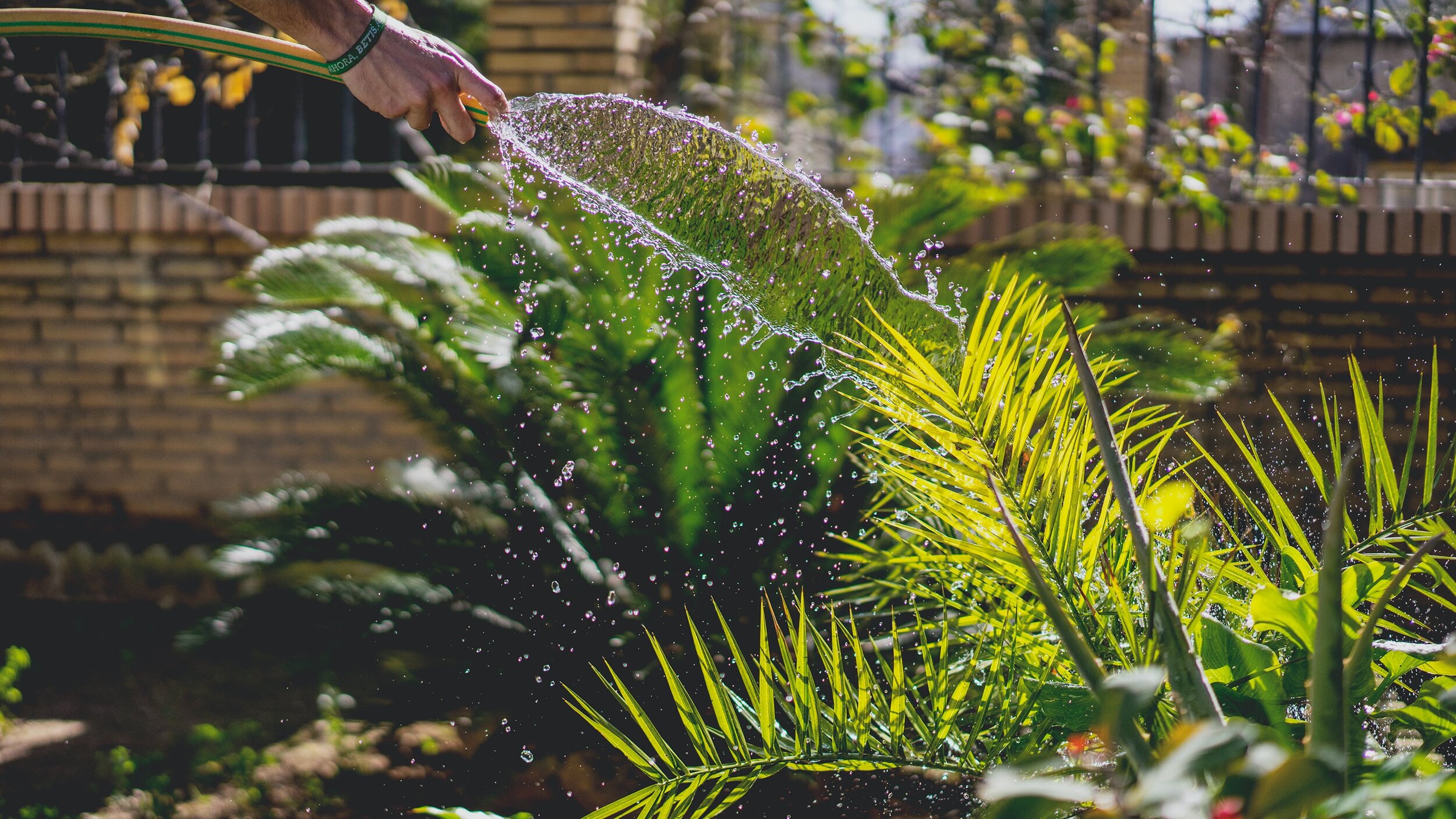In ground gardens are definitely the most budget friendly of the gardens becuase you aren’t paying for any extra materials, but they do take a bit of manual labor to get started. But don’t worry, we’ve got the best tips and tricks on how you can start your own
I N G R O U N D G A R D E N .
(You can also check out our other two posts in this
3 part series on how to start either a Container Garden or a Raised Bed Garden)
W H E R E T O G R O W
As is the same with raised beds, the location of your garden really just depends on what you’re wanting to grow. If you’re growing vegetables like tomatoes, cucumbers, or squash/zucchini you will need a space with FULL sun, which is 6 or more hours of sunlight. But if you have an area that has less than 6 hours of sunlight exposure, maybe try growing broccoli, carrots, or cabbage. It’s also beneficial for you to know which USDA zone you live in, which you can find here.
W A T E R I N G
DRAINAGE
Before choosing your location for your beds, make sure that your beds are not in a location where there is flooding. Flooding causes your roots to rot, which means no bueno for your plants.
WATERING
The best way to know if you are needing to water your plants is the standard test for any plant. Stick your finger about 3 inches into the soil and it should feel slightly damp. If not, you’re probably due for a good watering. Also know that if it’s the hottest part of the day and your plants seem to be really sad and wilted, it might not mean that they need water. They often do this to reserve water. For this reason, checking the soil is always the best indicator on whether your plant needs water or not.
HOW TO WATER
You can water each day with a plain old hose and water individually. If you do choose this method, be careful to not get the leaves wet as this can encourage fungus growth. Another option is by using a soaker hose. Although the best option for an in ground garden might be a drip irrigation system, as this can help get a specific watering amount that is unique to each plant. But either way, just make sure to water regularly so that your plant does not stress out. (And overhead sprinklers are quite inefficient, encourage fungus, and wastes water, so we do not recommend this method.)
S I Z E
You literally can choose whatever size you want, but one thing you might want to remember is to not “let your eyes be bigger than your stomach” or so to speak. If you’re first starting out, maybe try smaller this year, and then just add to it each year once you get the hang of things.
S O I L
For in ground gardens, the best part is that you already have soil! All you probably need to do is just get your soil tested to see what you need to add to set your plants up for success. (Here is a helpful article on that here). It might also be good to add a layer of fertilizer, compost, and top soil in combination with your grounds natural soil. This will help to give your vegetables, fruits, and flowers a huge boost and keep them thriving.
S U P P O R T
Surprise, surprise, surprise, your plant is growing! YAY! But don’t sabotage it by not providing it with enough support. Plants that climb and grow up like tomatoes need support to hold them up. This helps not only keep the fruits from touching the ground, but allows for better sunlight and aeration to reach through the plant.
You can support your plant by building a “teepee” with some cane sticks and just tie the main branches to the cane as it grows.
F E R T I L I Z E
To give your flower and vegetable plants a better chance, we advise working some fertilizer into your soil. Sprinkle a layer of fertilizer evenly over the top of the soil, work into your soil, and water it. Ideally this needs to be done 1 week or two before your start planting so that it has enough time to break down, but if not it’s not a huge deal. You can follow the directions on your fertilizer’s packaging as to how much to give your soil. Also remember that too much fertilizer can actually harm your plants, so please follow the directions.
G E T T I N G S T A R T E D
Before starting, decide what you want to plant. For example, if you’re wanting to plant vegetables/fruit, ask yourself what you enjoy eating. What foods are sometimes expensive in the grocery store but you think would grow well in your container? Try those out and see how amazing gardening for yourself can actually be!
WHEN STARTING WITH SEEDS
This process takes more time to see the “fruits” of your labour, but you are able to have more of a variety in which plant you actually want, because your local garden center may not have access to those starters. But always be sure to check with your garden center, aka Garden Valley for those of you local to the Triad of North Carolina. You can also check out this post we released last year on why shopping local is important.
When starting with seeds, vegetables will generally need to be propagated into seedlings before they are placed into your pot. You can reuse some old plastic containers that you’ve used for food like yogurt containers, egg shells, citrus peels, . Plastic is preferable in the instance because it retains moisture much better than a clay pot. Whatever container you do use, make sure it is clean and that you poke holes into the bottom to allow for drainage.
WHEN STARTING WITH STARTERS
With starters, the process is shortened and there is a better likelihood that your plant will survive. And we have plenty of starters vegetables and flowers to choose from at Garden Valley!
H O W T O S T A R T
Begin by removing the grass and weeds with a sod cutter, shovel. You can also do this if you’ve planned ahead and cover with black plastic for about a month or so.
Til the area and remove and remove and big roots or rocks
Test pH level if you’re able to as this will help your soil be well balanced.
Spread about 2-4 inches of old compost or manure, and add anything that your soil might need to balance the pH levels.
Mix all of the soil together well
Plan the layout by placing your plants where they will go, and remember to keep the mature plant in mind to avoid overcrowding
PLANT YOUR HEART OUT <3
(When planting, remember to also look at how deep your plant likes to be planted, as some only like
to be just below the surface, and some plants like to be planted deep into the soil.)
Don’t forget to leave us a comment below and let us know what you’re excited to plant this year!
Thank you so much for joining us here. For more information on what Garden Valley Farmers Market is about, you can visit us here. If you’re wanting to visit with us, come by any of our five North Carolina locations. If you’re wanting to follow along with us, you can do so either on our Facebook, Youtube, or our Instagram. And if you’re wanting to check out our other recipes and blog posts, or are needing more inspiration, follow us on our Pinterest. We’d love to have you join us in our journey of planting better, eating better, and living better.
Much love,
Your Garden Valley Farmers Market Team







